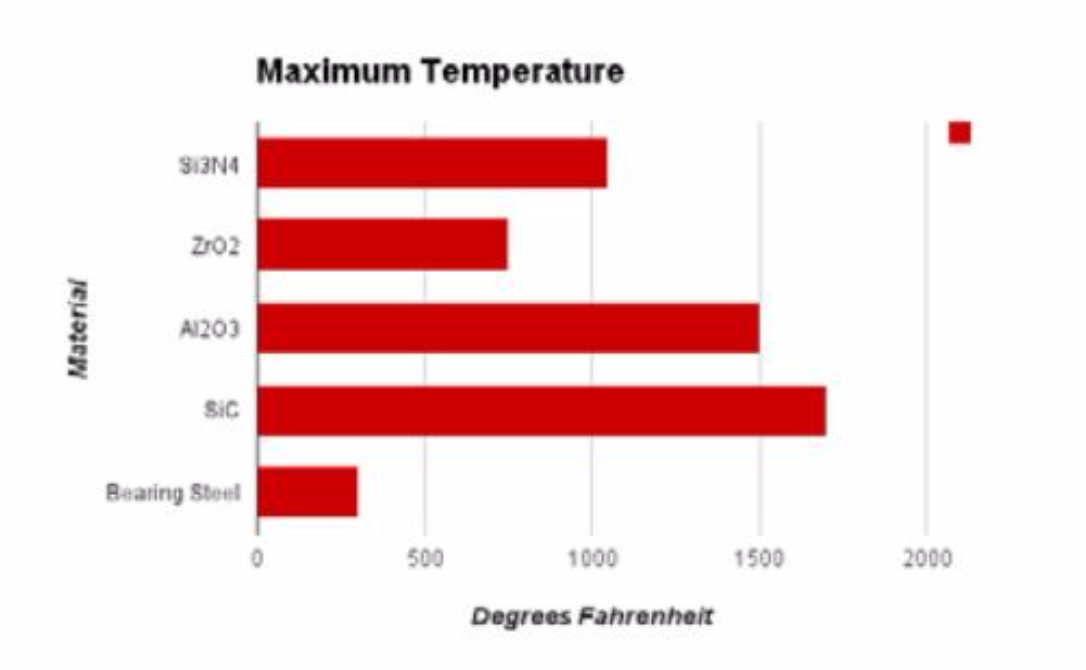The Ultimate Guide to Full Ceramic Bearings In Water Processing, Water Filtration and Liquid Handling (Part 2)
Ensuring Extensive Lifespan of Bearings
Generally speaking, ceramic materials are extremely durable. Most of them are man-made using chemical processes, and consequently can withstand extremely high temperatures and corrosive materials.
Full ceramic bearings have a much longer lifespan than hybrid ceramic bearings or the steel alternatives, particularly when they aren’t placed under a considerable load. This can be attributed to many properties of full ceramic bearings. Firstly, ceramics are much stronger. As a result, the balls or races of the bearing do not become distorted when placed under load. However, the superiority of full ceramic material increases with the load, and full ceramic materials are still at risk of premature failure in these cases.
The main limitation of ceramic bearings if the fact they can be quite brittle. Consequently, you must analyze the load to ensure the chose material can cope with the stress. Zirconia Oxide will handle large loads better than the rest of the full ceramic materials.
Electrical Insulation With Ceramic Bearings
The ceramic bearings are also non-magnetic, and with the exception of Silicon Carbide, provide good electrical insulation. Silicon Nitride offers the best electrical resistance, but is closely followed by Zirconia Oxide, which is readily available and fits within most budgets.
Improved Performance of Bearings in Water and Other Liquids
Research has demonstrated that full ceramic bearings perform better than any alternatives when placed in water. Depending upon the material used, the lifespan can be up to 70 times longer than stainless steel bearings, a common alternative. The best ceramic materials for use in water processing environments are Silicon Nitride and Zirconia Oxide. Hybrid ceramic bearings also perform better than steel, but their lifespans are significantly shorter than full ceramic materials, which in some cases have a lifespan 5 times longer.
Resistance to Corrosion
It is not feasible to use metallic bearings within industries handling water or other liquids, as they will corrode rapidly. When selecting the most appropriate material for the ceramic bearings, you should also consider the types of liquids the bearings will encounter. If the bearings will be used in environments containing corrosive materials, the lifespan will be significantly altered. Silicon Nitride offers good resistance to the majority of chemicals, so is often a good choice when the budget permits.
Temperature Considerations
When deciding which material to use, it’s important to consider the technical properties of each material to evaluate their suitability. One of the most important aspects to consider, particularly when working with liquids that may reach high temperatures, is the temperature of the environment in which you will be using the bearings. Silicon Nitride can be used in environments reaching up to 1050.F, without loading. However, this can change significantly when used in industries handling liquids, as the bearings can encounter significant loading.
The coefficient of thermal expansion is possibly a more useful characteristics, as it provides you with an indication of the materials ability to cope in response to heating and cooling. Full ceramic bearings offer relatively low coefficients, compared to the non-ceramic alternatives. For example, Silicon Nitride has a coefficient of 3.2 x 10-6/k and Silicon Carbide offers 3 x 10-6/k. Zirconia Oxide and Aluminum Oxide are considerably higher, at 10.5 x 10-6/k and 8.5 x 10-6/k respectively, but both of these are much lower than bearing steel, which has a coefficient of 12.5 x 10-6/k. In environments with considerable temperature changes. Silicon Nitride and Silicon Carbide are the best choices. These materials also offer good thermal shock resistance (up to 1112.F in Silicon Nitride, and 752.F in Silicon Carbide), which indicates minimal risk of fracture due to the changing temperatures.
Resistance To Fracture Under Load
The material’s ability to resist fracture is essential when used with liquids, such as water processing, as pressure is increased when submerged. Therefore, another characteristic that must be considered is fracture toughness. This indicates how capable the material is at resisting fractures in high-pressure environments. Zirconia Oxide offers the best resistance, with a fracture toughness of 10 MPA*m1/2, closely followed by Silicon Nitride at 6.2 MPA*m1/2. These are consequently the best materials to use in a high-pressure environment, where the risk of cracks and fractures is high.
The development of mechanical equipment for use in wet environments is no easy task, and selecting the right materials is vital to ensure the success of your business. Mistakes can be expensive, so it’s important to understand the properties of the available resources. When it comes to bearings, metallic or hybrid options are simply not an option if significant contact with water is expected. Instead, full ceramic materials should be used to ensure the machinery will be built to last, and will operate efficiently for the duration of its use.



